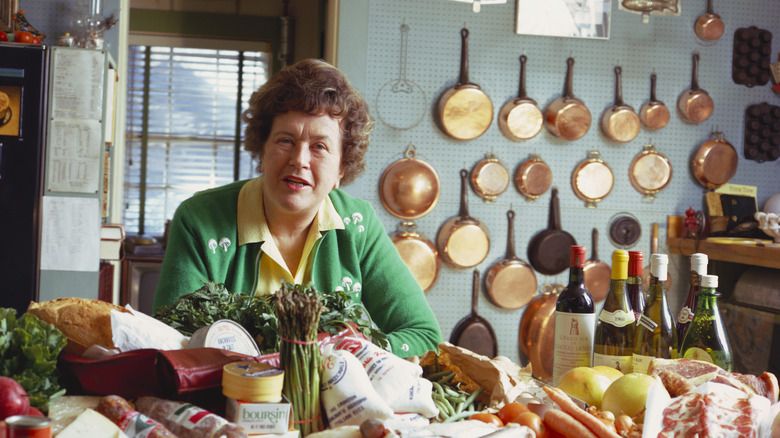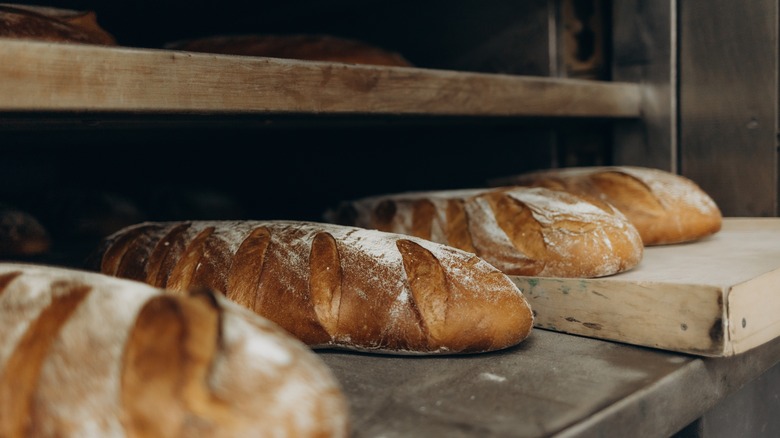The Reason Julia Child Baked With An Asbestos Tile
Julia Child was a pioneer in her time, and brought the joy of French cuisine to millions. But behind her jovial exterior was a serious cook. She was fastidious when it came to writing recipes, often bordering on scientific. And while some of those recipes have become iconic, one in particular proves memorable for an ... unusual reason. In 1970, she published her recipe for a baguette — by all accounts, it's pretty good, until she recommends baking your baguette on, of all things, an asbestos floor tile.
Obviously, this is completely insane. Child didn't know at the time (and altered the recipe as soon as she found out), but asbestos is an extremely hazardous material that causes multiple malignant cancers. You absolutely should not bake with it. Ever. Nonetheless, using the asbestos tile would indeed have improved her bread.
It's all to do with something called oven spring. This phenomenon in baking causes bread to grow up to 30% of its original size in its first 10 minutes in the oven, which, when perfected, leads to a fantastic crust and a light, airy crumb. Julia was using the asbestos tile to replicate the floor of a proper bakery oven, which holds a great deal of heat and really maximizes that oven spring. Baguettes should be baked very quickly, and the tile would allow a rapid transfer of heat to the dough, resulting in a solid baguette, even at home.
How to achieve the same effect at home
You can achieve the same results at home quite easily, and without putting yourself at risk! A pizza stone is a cheap fix that will help you achieve Julia Child's perfect baguette. Essentially, it's a large piece of stone or ceramic that performs the same function as her asbestos tile — it absorbs heat and distributes it quickly to the dough, achieving maximum oven spring. It also helps mitigate any uneven spots, meaning you can avoid patches that are over- or undercooked.
A baking steel is another good option for baguettes. While for something thick like your quintessential sourdough farm loaf, it can risk a burnt base (because of how well steel retains and conducts heat), with baguettes, that higher heat transfer allows for even greater spring without burning (due to the shorter baking time), resulting in that characteristic open crumb.
To make sure your loaves come out perfectly, take another cue from Child and create some steam in your oven. The exceptionally crunchy crust that defines good French bread is improved by the extra humidity, which stops the crust from forming too quickly and helps it stretch before hardening. Child used a brick (or the head of an axe) submerged in a pan filled with water, but you can get the same results by preheating a baking tray on the bottom of your oven and adding some ice cubes for that crispier bread crust.


